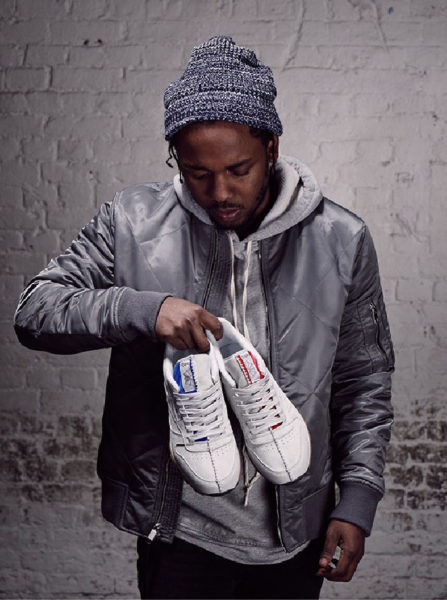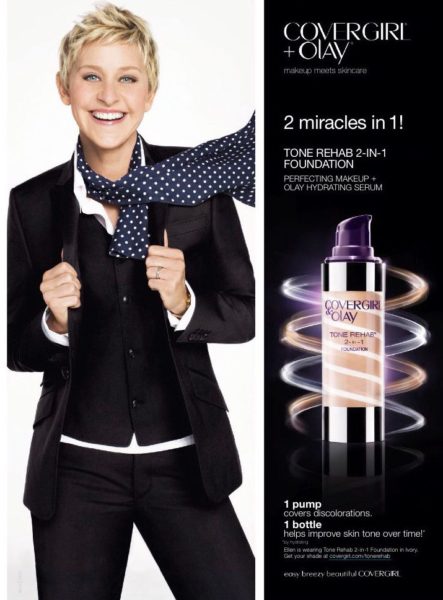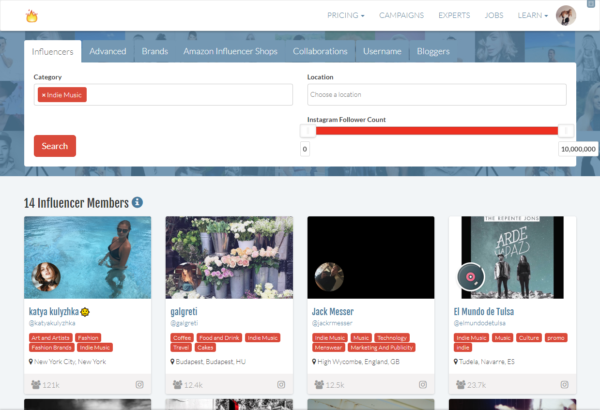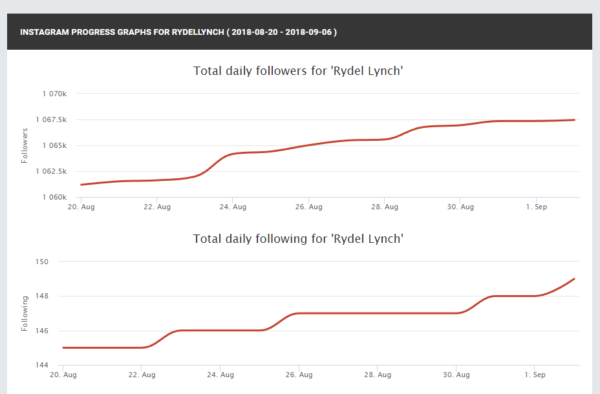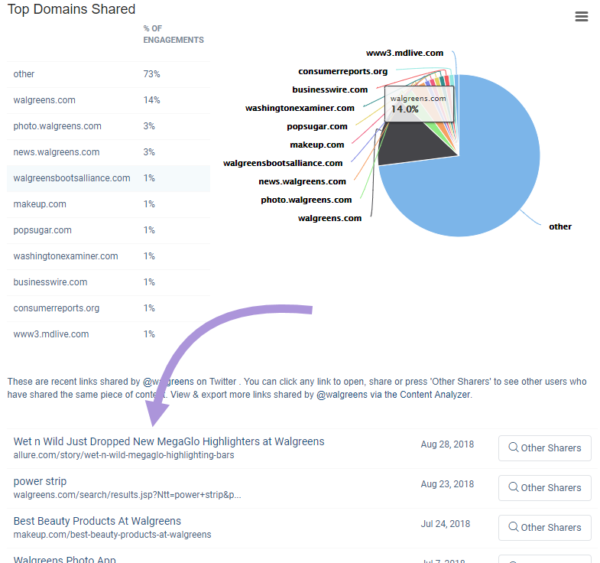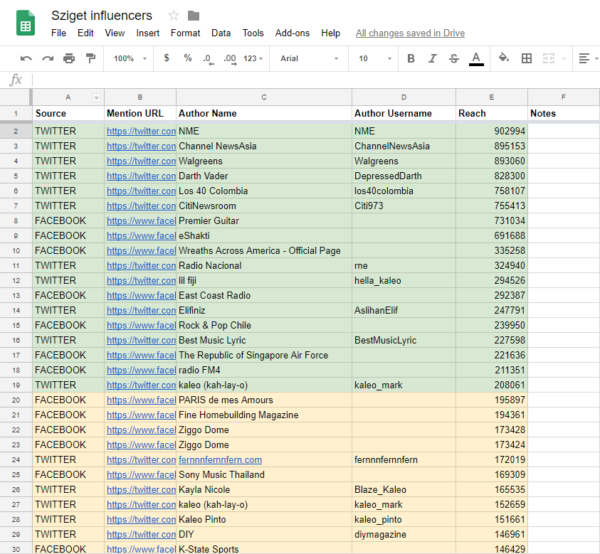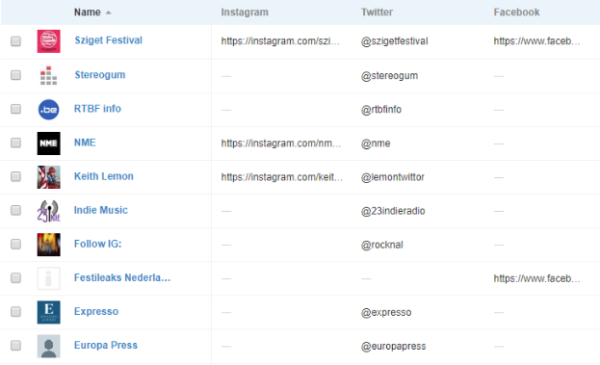It’s fair to say that influencer marketing is more than a buzzword today — it’s a common, and highly effective, marketing tactic. It’s valuable for growing your online customer base and increasing your brand awareness. People bet on it because it’s one of the relatively cheap and efficient methods of advertising. And it can be way more successful in driving results than any other form of marketing.
Influencer marketing is so efficient because it feels natural to customers. People tend to listen to someone they trust. Would you rather enroll in guitar courses promoted by your favorite YouTube blogger or by Facebook Ads?
Sometimes influencers smoothly turn into brand ambassadors, and that’s where the interesting part begins. Let’s take a look at a couple of successful cases of celebrity branding:
Kendrick Lamar, the Pulitzer prize winner for his rap album is a great example of celebrity endorsement. Lamar has a historical relationship with Reebok. Their first contract with Lamar was signed in late 2014. During their relationship, they made three sneaker collabs. And they were not just fashionable sneakers. Each release had its own powerful message.
Reebok Ventilator campaign had a theme of unity between bloods and crips gangs.
Ellen DeGeneres, from my own point of view, is an absolute leader in becoming a brand ambassador. She started with American Express in 2005. One of the best collaborations she had was with CoverGirl (American cosmetics brand). CoverGirl has always had celebrities to advertise their brand, but by collaborating with a 50-year-old gay woman, they conquered terra incognita. The collaboration was a huge success: CoverGirl was the first U.S. cosmetic brand to earn $1 billion within one year.
Ellen DeGeneres aged 59
But celebrities are not the only type of influencers that are profitable for brand promotion. I would divide influencers into 3 vast categories and name them micro-, meso-, and macro-influencers.
Micro-influencers are individuals with up to 20 000 followers. These people have a high level of engagement with their audience. Although micro-influencers have a small number of followers, they are still very important — think of how online reviews impact your choice.
Meso-influencers are, as a rule, professionals in their spheres. They are highly respected and have a great interest in their audience. That’s why they are considered to be the happy medium, and having such people as brand ambassadors typically fits any business. They have from 20 000 to 300 000 followers.
Macro-influencers are celebrities or other people with a massive social audience. They are the best fit for spreading awareness. Macro-influencers are followed by more than 300 000 people.
Celebrity endorsement was popular in influencer marketing in the past. While it still works great for large companies or brands, it’s seldom affordable for small business or individuals (Beyonce was paid $50 million for the Pepsi ad). So, celebrity branding is not the only option in today’s digital world. Regular content creators with niche audiences can add more value to brands.
Now that we’re done with the terminology, I will show you a simple framework for your influencer marketing campaigns. I’ll start with how to find the best influencers for your brand (focusing on 3 specific steps), how to segment them before you reach out, and how to deal with the actual outreach.
Find influencers
The key to a successful influencer marketing campaign is to focus on finding influencers who are right for you. Let’s imagine that you’ve just started an indie rock band. It would be pretty short-sighted to ask Taylor Swift or Katy Perry for their endorsement. But if you drop a message to a local booking agent, chances for the show to happen and, accordingly, growing your b(r)and awareness increase drastically, unless you don’t know how to play. Then no marketing will be of any use.
The right tactic of finding influencers will increase your chances of getting the most suitable ones (and increases their quantity as well, if it matters). Here are 3 tested steps for getting the best influencers ever. They’re 1) monitoring competitors, 2) tracking industry keywords, and 3) evaluating influencers’ relevance.
Monitoring competitors
Discovering competitors’ influencers and reaching out with a pitch they can’t ignore is a good plan for winning them over. To find out who advertises or just mentions your competitors, you can use any social listening tool, e.g. Awario or Brandwatch. They search for influencers in relevant conversations across social media and the Web.
First, we’ll set up an alert with competitors’ names. Let’s stick to the previous music band example. Imagine that your band did a couple of shows. You had such a great success that now you’re invited to the Sziget fest. Let’s have a look at the fest line-up, pick some other indie bands and use their names as the keywords for the search query. We’ll settle on, say, Arctic monkeys, Oscar and the Wolf, Fink, Kaleo, Bastille, and MØ.
When everything is set up, you’re likely to get the first mentions right away. But the more data you have to work with, the better, right? So feel free to grab some coffee or walk your dog while the tool does its magic. When you’re back in an hour or so, you’ll have enough mentions in your feed to work on.
As we need to quickly grow awareness of our brand, the most suitable will be macro- and meso-influencers. The next step is to export mentions with 20 000+ reach to the CSV file. Alternatively, you can create one yourself and manually add influencers from the Awario Influencers report. The latter may even be more effective if you favor quality over quantity. We’ll use this file on the further steps as well.
While adding new people to the spreadsheet, google them or check their social profiles so as to dig some information for making your connection more personal. It’s a good idea to create a special column in the spreadsheet and take notes on each and every influencer. This should help with creating personalized emails at the outreach stage. It’s easier to start a conversation with somebody if you know she adores cats or that you were at the same café last week.
Tracking industry keywords
It’s a slightly different method. On top of searching for competitors, let’s try to use descriptive keywords and phrases related to your niche. This way we’ll look at things from a different angle.
I would recommend Influence.co for this purpose. This website offers a free influencers database. All you need to do is provide the category for the influencers. In our case, it will be, say, “indie music”, “indie rock”, and “indie bands”.
The free version found 14 influencers in the Indie Music category
The platform returns results instantly. These new influencers should also be added to our CSV file. Don’t forget to fill in the Reach column as well. If you have a Pro account ($4 per month, billed annually), you will get access to a 10+ million database of influencers.
Evaluating influencers’ relevance
The next step is checking whether social media influencers are relevant. You can do this with the help of Social Blade. The service checks whether the influencers have a natural following growth curve. People who buy followers, won’t give you the engagement rates you need.
The number of followers for this influencer grows gradually, therefore we can trust this person
Additionally, you can check whether they write about relevant topics with the help of a tool like BuzzSumo. It has the Influencers tab, where you can track the links the influencers shared and decide if it’s a good idea to contact them.
The links seem to be irrelevant. The influencer should be deleted from the CSV file
Segmentation
Once an indicative influencer list is ready, we can get down to taking care of it.
First thing we need to do is to sort all the influencers from the list by the reach rates and divide them into macro-, meso-, and micro-influencers. You can color each group so that it would be easier to differentiate them.
Influencers, sorted by the number of followers. Macro-influencers are green, meso-influencers are yellow
Most probably, you already have some followers. Some of them may turn into great micro-influencers. Perhaps you have a niche blogger who is already subscribed to your social networks and uses your product or service. The thing is that people following you are most likely to be interested in what you do and, therefore, it will be much easier and cheaper to start your advertising campaign with them. Scan through your social profiles and if you find relevant people, add them up to the list of influencers and start engaging with them right away.
Outreach
When you’ve identified a set of influencers who seem right for your brand, the next step is direct engagement with them. I recommend you to start from the bottom of the list, with influencers having the smallest reach or a number of followers. This way you’ll practice, and the chance of rejection or just being ignored by more influential people will be lower. After a while you’ll figure out which tactics are better and will be ready to get down to the bigger prey.
It’s totally okay to use templates for reaching out to influencers. But if you wish to increase the response rate, personalize your emails. Don’t be afraid to tell the influencer why you appreciate their work or show your personality. Offer them a free trial or any other incentive.
While making a template, make sure you thought about why an influencer would be interested in your product. Think about the campaign goals. Your message should also contain an eye-catching subject line which would make your influencers read it. It’s a good idea to finish the message with a strong call-to-action. If you’re looking for some inspo, check out a great selection of outreach email examples.
It’s important to choose the suitable format to connect with them. Be aware that some people just ignore emails, so it often makes sense to reach out in social networks. Of course, if your first message is ignored, you’d better be persistent and make a follow-up or try another platform, but don’t be too pushy, people don’t like it.
Successful influencer marketing requires you to build a long-term relationship with influencers. So don’t make your connection wither away by getting rid of them as soon as you’ve got what you want.
You can easily find a bunch of outreach tools out there. But in our case, Nimble will be the right choice because it’s perfect for bonding and building long-term relations with your influencers. It can:
- Import the CSV file you made;
- Assign certain influencers to your team members;
- Tag your contacts;
- Contact users via social networks as well as by email;
- Create message templates and more.
Based on the information from your spreadsheet, Nimble displays social accounts of the influencers
Wrap-up
Influencer marketing is not rocket science at all. But it still has its own pitfalls. I hope the tips and tools listed above will be of great use and will quickly result in turning your influencers into brand ambassadors. Don’t forget to offer your influencer a clear goal of the campaign. Make a strong bond with them and aim at a long-term relationship rather than a one-night stand. Influencer marketing has become popular for one reason — it works and scales.
Read more: 4 Tips for Finding the Perfect Social Media Influencer
